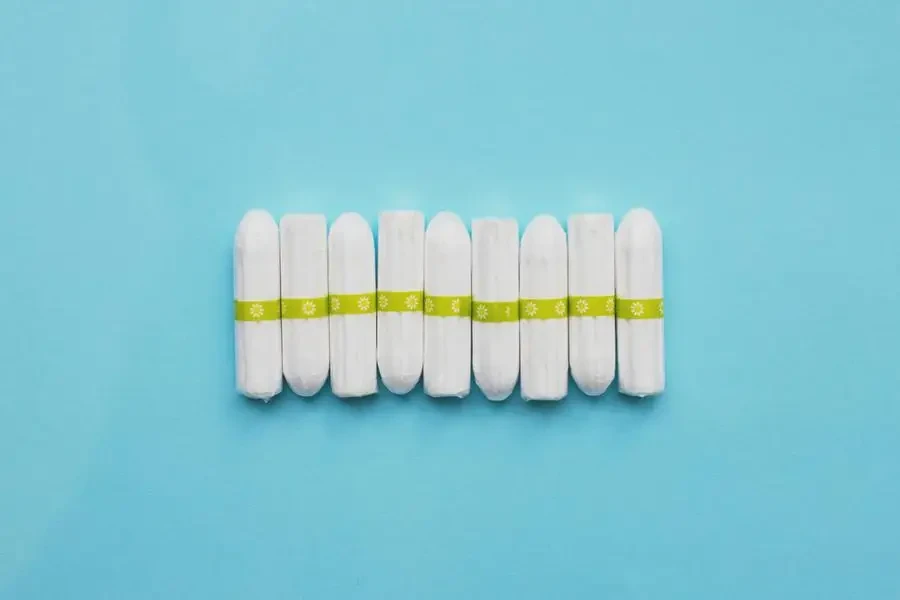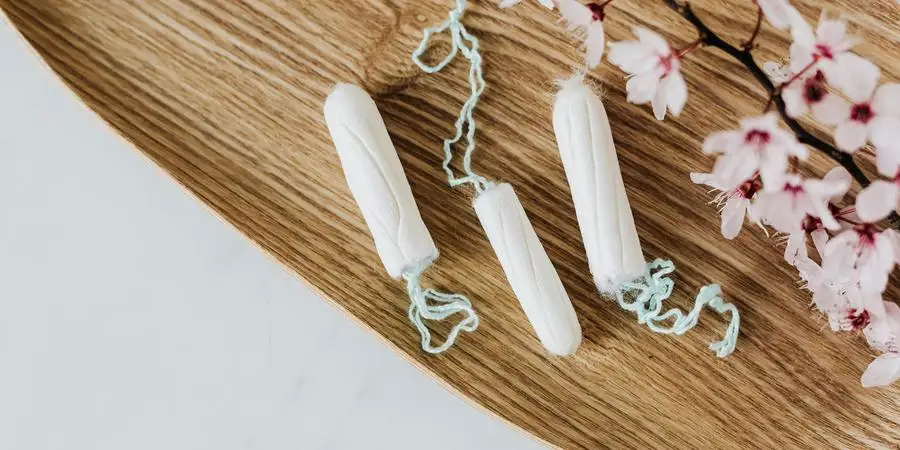In recent years, the shift towards sustainable and eco-friendly products has significantly impacted various industries, including feminine hygiene. Organic tampons have emerged as a popular choice among modern consumers, driven by increasing awareness of health, environmental concerns, and social media influence. This article delves into the rise of organic tampons, exploring their unique benefits, market potential, and the social media buzz fueling their demand.
Table of Contents:
– Exploring the Rise of Organic Tampons: A Sustainable Choice for Modern Consumers
– Diverse Types of Organic Tampons: Pros, Cons, and Consumer Insights
– Addressing Consumer Pain Points: Solutions and Innovations in Organic Tampons
– Key Considerations for Sourcing High-Quality Organic Tampons
– Final Thoughts on the Future of Organic Tampons in the Market
Exploring the Rise of Organic Tampons: A Sustainable Choice for Modern Consumers

Defining Organic Tampons and Their Unique Benefits
Organic tampons are made from 100% organic cotton, free from synthetic materials, pesticides, and harmful chemicals. Unlike conventional tampons, which often contain rayon, chlorine, and other additives, organic tampons offer a safer and more environmentally friendly alternative. The benefits of organic tampons extend beyond personal health; they are biodegradable, reducing the environmental impact associated with menstrual products. Additionally, organic tampons are hypoallergenic, making them suitable for individuals with sensitive skin or allergies.
Analyzing Market Potential: Trends and Growth Areas
The market for organic tampons is experiencing robust growth, with a forecasted increase of USD 404.27 million from 2023 to 2028, at a CAGR of 6.67%, according to a professional report. This growth is driven by several factors, including aggressive marketing strategies, the increasing biodegradability of organic tampons, and rising awareness about menstrual hygiene. The demand for organic tampons is particularly strong in regions like North America and Europe, where consumers are more environmentally conscious and willing to invest in sustainable products. Additionally, the Asia-Pacific region is witnessing a surge in demand, fueled by growing awareness and government initiatives promoting menstrual hygiene.
Social Media Buzz: Hashtags and Trend Topics Driving Demand
Social media platforms play a crucial role in shaping consumer preferences and driving demand for organic tampons. Hashtags such as #OrganicTampons, #SustainablePeriods, and #EcoFriendlyFeminineCare have gained significant traction, with influencers and activists advocating for the benefits of organic menstrual products. Trend topics like #PlasticFreePeriods and #ZeroWasteLifestyle further amplify the conversation, encouraging consumers to make eco-conscious choices. The visibility and engagement generated by these social media campaigns contribute to the growing popularity of organic tampons, making them a preferred choice for environmentally aware consumers.
In conclusion, the rise of organic tampons represents a significant shift towards sustainable and health-conscious feminine care. With their unique benefits, growing market potential, and strong social media presence, organic tampons are poised to become a staple in the menstrual hygiene market. As consumers continue to prioritize health and environmental sustainability, the demand for organic tampons is expected to rise, driving further innovation and growth in this sector.
Diverse Types of Organic Tampons: Pros, Cons, and Consumer Insights

100% Cotton Tampons: Purity and Performance
100% cotton tampons are highly regarded for their purity and performance. These tampons are made from organic cotton, which is free from pesticides, synthetic fibers, and harmful chemicals. This makes them an excellent choice for consumers who prioritize health and environmental sustainability. The absence of synthetic materials reduces the risk of irritation and allergic reactions, making them suitable for women with sensitive skin.
However, the cost of 100% cotton tampons can be higher compared to conventional options due to the organic farming practices involved. Despite this, the demand for these tampons is on the rise as more consumers become aware of the benefits of organic products. According to a professional report, the increasing preference for organic tampons is driven by the growing awareness of the potential health risks associated with synthetic materials used in conventional tampons.
Biodegradable Tampons: Eco-Friendly and Effective
Biodegradable tampons are designed to minimize environmental impact. These tampons are made from materials that break down naturally, reducing waste in landfills. They often incorporate organic cotton and other plant-based materials, ensuring that they are both effective and eco-friendly. The use of biodegradable materials addresses the growing consumer concern about plastic waste and environmental sustainability.
One of the main advantages of biodegradable tampons is their ability to decompose quickly, which significantly reduces their environmental footprint. However, the production and distribution of these tampons can be more complex and costly, which may affect their accessibility and affordability. Despite these challenges, the market for biodegradable tampons is expanding as consumers increasingly prioritize eco-friendly products.
Applicator vs. Non-Applicator: Consumer Preferences and Feedback
The choice between applicator and non-applicator tampons is largely influenced by consumer preferences and feedback. Applicator tampons are popular for their ease of use and hygiene. They come with a plastic or cardboard applicator that helps insert the tampon without direct contact, making them a preferred choice for many women. However, the environmental impact of plastic applicators has led to a growing demand for more sustainable options.
Non-applicator tampons, on the other hand, are favored for their cost-effectiveness and minimal environmental impact. These tampons require manual insertion, which some consumers find less convenient. Nevertheless, non-applicator tampons are widely available and are often chosen by environmentally conscious consumers. According to industry insights, the preference for non-applicator tampons is particularly strong in developed markets where cost and sustainability are significant considerations.
Addressing Consumer Pain Points: Solutions and Innovations in Organic Tampons

Tackling Allergies and Sensitivities: Hypoallergenic Options
Hypoallergenic tampons are specifically designed to address allergies and sensitivities. These tampons are made from materials that are less likely to cause allergic reactions, such as organic cotton and other natural fibers. The absence of synthetic additives, fragrances, and dyes makes hypoallergenic tampons a safe choice for women with sensitive skin.
Manufacturers are continuously innovating to improve the safety and comfort of hypoallergenic tampons. For instance, some brands incorporate aloe vera and probiotics to enhance comfort and reduce the risk of irritation. These advancements not only cater to the needs of sensitive consumers but also contribute to the overall growth of the organic tampon market.
Enhancing Comfort and Absorbency: Technological Advancements
Technological advancements in tampon design have significantly enhanced comfort and absorbency. Innovations such as radially wound pledgets and advanced absorbent materials ensure that tampons provide reliable protection without compromising comfort. These features are particularly important for women with heavy menstrual flow who require high-absorbency products.
Moreover, the integration of smart materials and biotechnology has led to the development of tampons that can detect abnormal menstrual patterns or potential health issues. These tampons offer a higher level of convenience and safety, appealing to tech-savvy consumers. According to industry experts, the demand for technologically advanced tampons is expected to rise as consumers seek products that offer both comfort and functionality.
Packaging Innovations: Convenience and Sustainability
Packaging innovations play a crucial role in enhancing the convenience and sustainability of organic tampons. Brands are increasingly adopting eco-friendly packaging solutions, such as compostable cardboard applicators and recyclable materials. These innovations address consumer concerns about plastic waste and environmental impact.
Convenient packaging options, such as compact and discreet designs, also cater to the needs of modern women who lead dynamic lifestyles. For example, some brands offer tampons in resealable pouches that are easy to carry and store. These packaging innovations not only improve the user experience but also align with the growing consumer demand for sustainable and convenient products.
Key Considerations for Sourcing High-Quality Organic Tampons

Evaluating Supplier Certifications and Standards
When sourcing high-quality organic tampons, it is essential to evaluate supplier certifications and standards. Certifications such as the Global Organic Textile Standard (GOTS) and the Organic Content Standard (OCS) ensure that the tampons are made from organic materials and meet stringent quality criteria. These certifications provide assurance to business buyers that the products are safe, sustainable, and ethically produced.
Additionally, suppliers should adhere to international safety and quality standards, such as ISO 13485 for medical devices. This ensures that the tampons are manufactured in compliance with regulatory requirements and are safe for consumer use. Business buyers should prioritize suppliers with robust certification and compliance records to ensure the quality and safety of the products they source.
Understanding Ingredient Transparency and Safety
Ingredient transparency and safety are critical factors when sourcing organic tampons. Business buyers should seek suppliers that provide detailed information about the materials used in their products. This includes the source of the cotton, the absence of harmful chemicals, and the use of natural additives. Transparent labeling and ingredient disclosure help build consumer trust and ensure that the products meet health and safety standards.
Moreover, it is important to verify that the tampons are free from potentially harmful substances, such as dioxins, chlorine, and synthetic fragrances. Suppliers should conduct rigorous testing to ensure that their products are safe and non-toxic. By prioritizing ingredient transparency and safety, business buyers can offer high-quality organic tampons that meet consumer expectations.
Assessing Market Demand and Consumer Preferences
Understanding market demand and consumer preferences is crucial for sourcing high-quality organic tampons. Business buyers should conduct market research to identify trends and preferences in their target markets. This includes analyzing consumer behavior, preferences for specific tampon types, and the demand for eco-friendly and hypoallergenic options.
For instance, the growing preference for organic and biodegradable tampons indicates a shift towards sustainable products. Business buyers should align their sourcing strategies with these trends to meet consumer demand and stay competitive in the market. Additionally, collaborating with suppliers who are responsive to market changes and consumer feedback can help ensure a steady supply of high-quality products.
Final Thoughts on the Future of Organic Tampons in the Market

The future of organic tampons in the market looks promising, driven by increasing consumer awareness, technological advancements, and a growing preference for sustainable products. As more women prioritize health and environmental sustainability, the demand for organic tampons is expected to rise. Business buyers should focus on sourcing high-quality products that meet consumer expectations and adhere to stringent safety and quality standards. By staying attuned to market trends and consumer preferences, businesses can capitalize on the growing opportunities in the organic tampon market.




